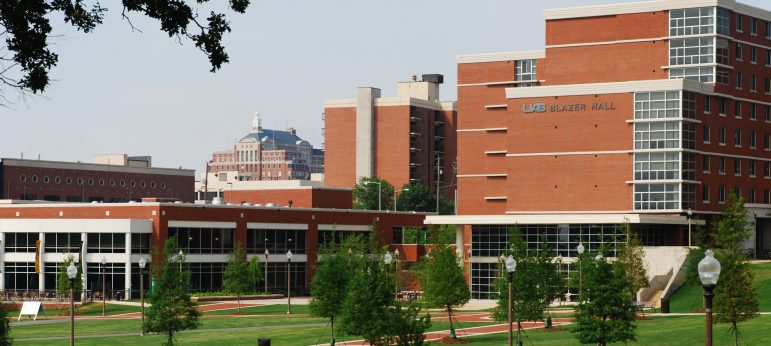The Center for Biophysical Sciences and Engineering, or CBSE, sits on the edge of UAB’s campus. It’s an oddly shaped, unassuming red brick building. Inside is the kind of quiet you’d expect in a hospital — or maybe outer space, which would be appropriate since so much of what’s created in the building is designed for use in the wild blue yonder.
“What we have in here is these prototype systmes that we’ve been working on and this is the GLACIER system right here. IT is not a flight unit, matter of fact, this is a prelude to flight hardware where you’re testing out a lot of technologies necessary to be able to build the system that NASA’s wanting to use on the space station.”
Michael Harrington is the Associate Director for Engineering at the CBSE.
“We’ve developed systems for a number of the NASA centers and this system revolves around, primarily, our expertise has become known in thermal carriers which are used in a lot of science by a lot of other investigators as well as storage of a lot of samples that need to be maintained onboard space station and space shuttle.”
Former astronaut Dr. Larry DeLucas started the CBSE in the mid-80’s to research how protein crystals grow and work in the human body. As some of those experiments began to be flown on the space shuttle, the CBSE decided to hire engineers from the private aerospace industry to help develop its own engineering department. Fast-forward about fifteen years and that engineering department is now competing with big names like Lockheed Martin and Wiley Laboratories for NASA projects — pushed to do so because NASA is now focusing less of its energy on research and more on exploration.
The first major contract the CBSE won, in its bid to branch out, was the GLACIER Project. Manager for Engineering Lee Moradi says they’re building, basically, a special deep freezer for use in space.
“It will be placed on the space station for science experiments. It’s one of a kind and we started with the prototype unit and we were in a race with another contractor and we were selected as the better contractor and we are now building several flight units for NASA.”
Again, Michael Harrington.
“Then the mindset in the aerospace community was ‘well, we’re stunned that you had a competent enough design to win one of the prototype unit but there’s no way you’d ever win the flight contract’.”
Harrington says the aerospace community was shocked when the CBSE won what he calls a NASA “bake-off”.
“The performance of our prototype unit was, very much impressed NASA and sure enough we won the contract to do the flight development so it’s been a real Cinderella story as far as getting this particular job.”
In addition to GLACIER, the CBSE is also now one of four approved bidders for NASA’s CRAVE Contract — which covers almost anything dealing with crew equipment or vehicles. Moradi says it’s a big deal the CBSE was approved for CRAVE, again because it was going up against some pretty big aerospace contractors.
“We came from those contractors, we know they’re psyche, we know how they operate and I have tremendous respect for all of them. We’re more like one of those space, or aerospace, contractors within a university and we’ve been able to compete with them at their level.”
Dr. Charles Lundquist is a retired Associate Vice President for Research at the University of Alabama at Huntsville. He’s also a NASA expert and says the space agency has a long history of working with universities. Lundquist says it makes sense moneywise.
“The big aerospace companies have high overhead rates and are very expensive … it’s often possible for a dedicated team at a university to do the same job much cheaper.”
The various projects that fall under CRAVE could eventually mean millions of dollars in contracts for the CBSE.
We now have the opportunity to bid on the different task orders that are coming out within the CRAVE Contract and those task orders could be from 50-thousand, maybe even less, all the way into the millions.”
And UAB’s Center for Biophysical Sciences and Engineering could be seeing some of that money soon. They’ve put bids out on three separate projects and are just waiting to hear back from NASA. But almost as important as the money the CBSE could bring in is the fact that winning CRAVE and GLACIER could be the engineering foot in the door it needs for NASA projects down the road.

